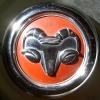-
Posts
7,174 -
Joined
-
Last visited
-
Days Won
78
Content Type
Links Directory
Profiles
Articles
Forums
Downloads
Store
Gallery
Blogs
Events
Everything posted by JBNeal
-
U-Haul, back in the day
-
Ringo stuck in traffic
-
happy hour down at the club
-
Tucker Torpedo on display for the masses
-
VINTAGEPIC: Pilot-House Dump Truck
-
VINTAGEPIC: saw this B-1or2 Panel
-
I have a few other candidates that I would strap to the front of a vehicle before that gravelly voiced yahoo, but the real question I would ask is, how often would ya use them anchor bolts? I had a lively discussion with my dad who wanted to bolt a small manual tire changer to the middle of his shop floor, with my argument being that it would be in the way more often than it would be useful, as we only use that tool a few times a year, if that. I came up with a compromise last year, welding a platform with some scrap steel to bolt the tire changer onto...the platform is heavy enough that it doesn't scoot around, but light enough that it can be moved without a forklift. I have seen a well-intentioned handy man anchor some bolts in old concrete, and all looked well, except when a full load was applied...a loud *pop* was heard, and the contraption that was holding a LOT of weight began to move around, causing slow moving gents to flee with alacrity (and not very gracefully) and a lot of expensive stuff get tore up...that's when they found out their shiny smooth shop floor had no rebar in it, and was a little on the soft side, a possibility that was explained previously. This one incident makes me look at all anchor bolt installations with suspicion, and I am super leery when I hear folks planning on giving it a shot without knowing for certain the condition of the concrete they are tapping into. I am not saying that an anchoring system is a bad idea, but assuming certain material conditions are present could be a recipe for disaster...other alternatives could be attempted that are less permanent to the structure and can be removed when not in use
-
Would it be easier to go the Red Green route and duct tape an old tire to a pusher vehicle and ease it up the slope as needed?
-
VINTAGEPIC: Pilot-House Human Torpedo
-
VINTAGEPIC: saw this B-3 Pilot-House in traffic
-
That rad flush is designed for modern cooling systems that are designed to heat up fast. The flathead block acts as a massive heat sink, with the tempgauge bulb at almost the warmest point in the cooling system. I have tried rad and engine flushes before, thinking that the entire engine has reached operating temperature, only to check the fluid to find out it is cool to the touch. So I would take the flush instructions under advisement and try a different approach that follows the spirit of the instructions. In the case of rad flush, I would drive around for an hour or so with straight tap water in the system, drain that out, repeat with the tap water and drain, then with the block still hot, add the flush with the tap water and doubled the idle time the flush instructions called for, drain, run with tap water for another hour, then rinse out...got way more crud out of the system that way
-
Just a thought: sand that driveshaft with 80 grit to knock down the loose rust, degrease and clean thoroughly, prime and paint with foam brush / roller using Rustoleum primer and semi-gloss black...that approach should only cost a few bucks, give ya decent results for something rarely eyeballed, and not damage the shaft
-
I have had 2 temp gauges repaired, and both times I would take them to the kitchen for testing. I would submerge the bulb in a small pot of water, then get the water boiling, and adjust the needle to 212, then let everything cool off for an hour to calibrate the gauge without overstressing it
-
additional information - Tailgate Letter Details
-
I have done some emergency patchwork with oxy-acetylene and with stick welds, and tho stick welding is very difficult, it can be done, better results with DC neg.electrode...clean metal and a good ground are paramount. The best sheet metal welds I have seen have had many tacks before several seams are welded...kinda like stitching the metal, to minimize warpage. Another issue is the composition of the metals welded...differing carbon composition in panels will have different thermal expansion rates. I have seen old steel patched with new, and in the TX summer heat, the patch panels stick out like tumors to the trained eye. At any rate, the stitching approach is not fool-proof, as excessive heat can cause wrinkling at the weld seam.
-
VINTAGEPIC: Pilot-House at the beach saw these B-1or2 Pilot-Houses at the parade
-
material quality is an ongoing problem in china & india...they can make stuff the way the American companies specify, but then somebody over there decides to go cheap for more profit and we get stuck with buying their carp...what a bunch of tools
-
VINTAGEPIC: spotted this big B-3or4 delivery truck in The Big Apple
-
VINTAGEPIC: spotted this big B-1or2 at the service station
-
I found the safe place where I put the door lock several years ago, and commenced to oiling that cylinder with the Marvel Mystery Oil to loosen up the tumblers, as key engagement was difficult and the lock wasn't turning. After several weeks of oiling, jiggling, wiggling, wiping, waiting a few days and repeating, the key cylinder finally turned, and about a week after that, the cylinder began to operate almost as smooth as the one on the '48...so I went to get a new key made after all these years of forgetting to get around to it. The next key problem is with the ignition, as the key locks into the cylinder when it is in the accessory position, but it slides right out when in the run position...some oiling and jiggling with the new key, and it feels like the cylinder wants to lock the key in, but it is not consistent enough yet...I'd had for the key to fall out while this beast bounces down the road
-

1951 B-1-D-126 BUILD THREAD Flatbed Red
JBNeal replied to JBNeal's topic in Mopar Flathead Truck Forum
While working on the 1-ton, I got a wild hair to get a spare key made for this '51, and as I retrieved it from the ignition, I thought I'd try the door lock...who knows if it had ever been used...I'd been oiling that lock with Marvel Mystery Oil every equinox or so since I brought this beast home in 2010...a little jiggling to get the key in the cylinder, a little wiggling when the key seated, and surprise surprise the old key turned that lock almost as easily as the '48! So even though this truck is nowhere near running, at least I can lock the doors -
Rear coil springs could be a '67-'72 GM 1/2 ton axle...wish I could remember where I read that 70s GM axles used practically the same U-joint as the early B-series, haven't got around to confirming that yet
-
Fuzzy dice in the rafters, never seen that before...I've got a rusty stamped No Fishing sign over the door in the garage that has drawn a few confused looks, to my amusement
-

Sometimes even the books fall short
JBNeal replied to Jeff Balazs's topic in Mopar Flathead Truck Forum
In my collection of yard art, I have a '52 near complete FD rolling chassis with title that may get a '51 near complete donor body, and have taken note of the various experiences & opinions of other FD drivers. With your rear axle ratio change, I am kinda wondering if the FD coupling is slipping from excess loading. Changing your tire size may reduce this loading, but it might not be enough as the fluid inside the coupling can only shear so much before slipping...if your dead load is in excess of that maximum shear force in the coupling, then the clutch may be mating up as it should but the coupling continues to slip. I bring this up as I have seen hydrostatic transmissions on small tractors really heat up and start to slip from overloading by operators in the springtime, usually when mowing thick tall weeds on property that the tractor can easily mow when the vegetation is shorter (less load). Others may have made the swap to the 3.55 and have had good results with their standard clutch setup, but what may be lurking over the horizon for them is an inevitable nagging clutch slippage that will have to be addressed. The FD appears to be amplifying this issue, as it is designed to slip to protect the clutch and other driveline components. As far as the accuracy of the factory parts manual is concerned, I generally take that information with a grain of salt, as I have seen errors in catalogs from Mopar, GM, CaseIH / IHC, John Deere, Subaru...they are small errors, but when ordering parts, an error is an error if things don't line up or fit. At 2 previous OEMs I worked, the parts guys would rely on info from the engineering dept, and engineering mgmt. would make the business decision to put the least amount of resources as possible into maintaining legacy equipment, as they would surmise that any problems in this area would either work themselves out as equipment would disappear through attrition and/or there would not be enough parts sales to justify the engineering time needed to straighten this out. There was one repair kit we sold for $20 that had the wrong hardware called out; to change the documentation would cost engineering about $200 in ECNs and dispositions, the parts involved cost $5, and sales were weak annually but steady, so mgmt. assumed that service depts. in the field were fixing the problem out of their pocket and opted to allocate resources elsewhere (even though I had marked up all of the drawings / parts lists involved for revisions, it still needed to pass through half dozen other ppl for proper documentation). And the running change in engineering was the biggest culprit of errors in parts catalog, with these Pilot House trucks seeming to have them when referencing the S/N application notes for parts disposition. At any rate, if there are more than one FD clutch applications out there, I would not be surprised...I have found on two of these trucks that the parts on truck (one being an entire engine) don't match up to what is in the catalog...one truck has a Chevy air cleaner on it, ya may have a clutch disc from a Studebaker in there for all we know


